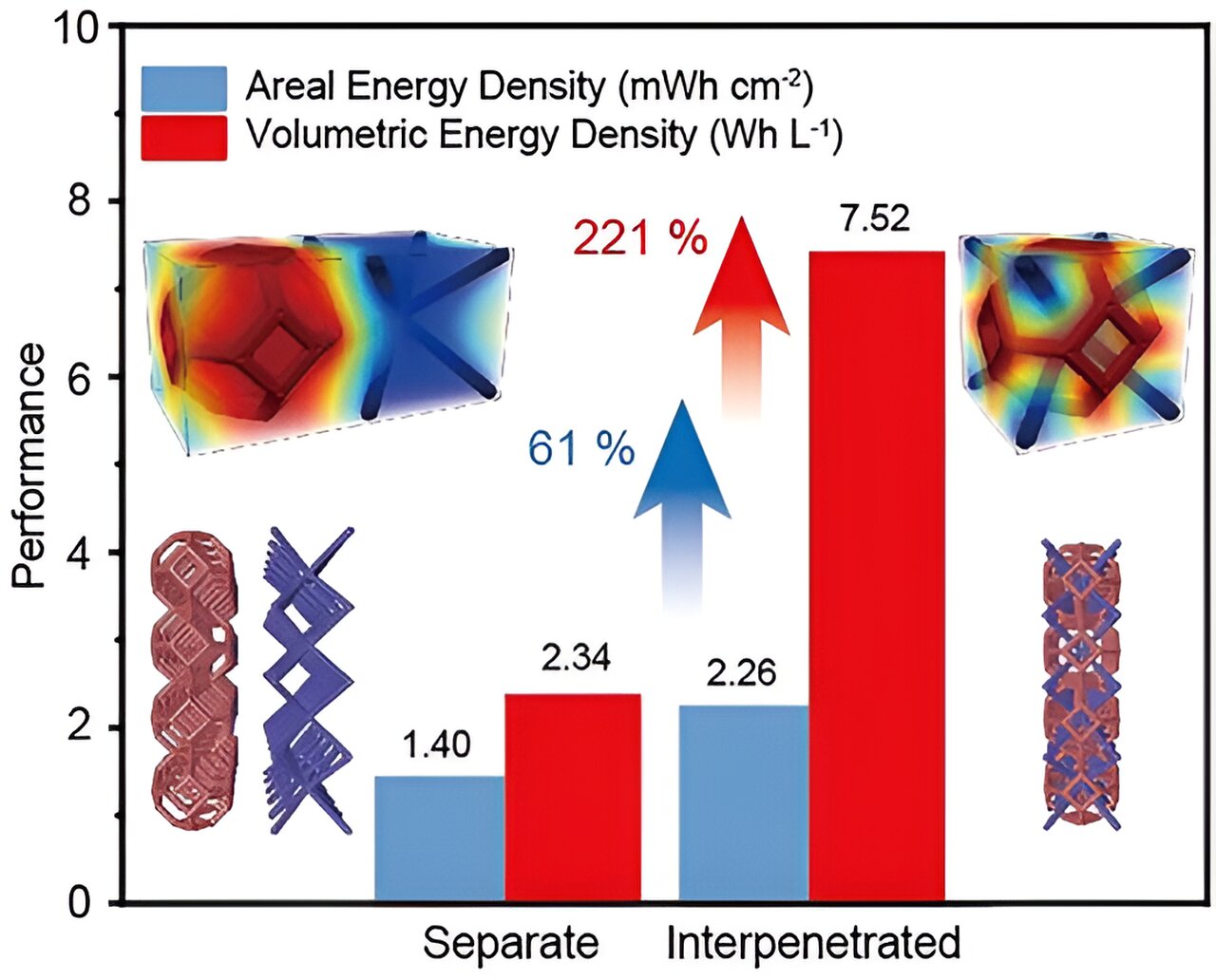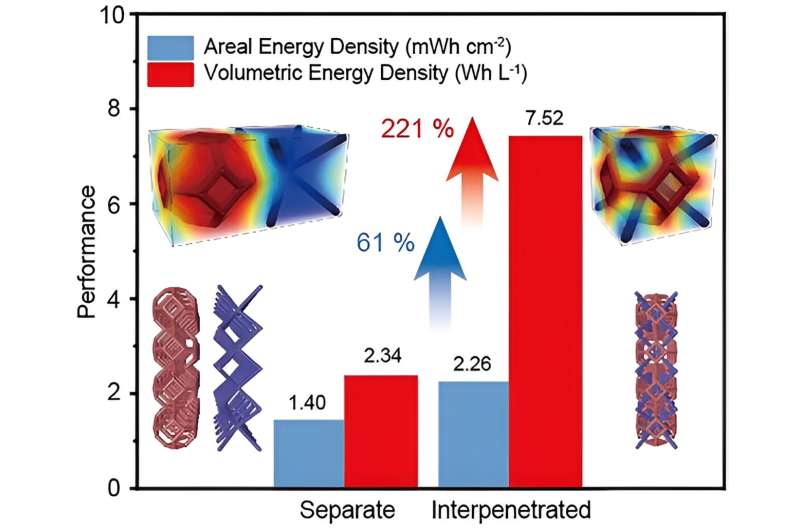

As global demand for electrochemical electrodes continues to rise, a new trend has emerged, emphasizing the need to maintain ion diffusion efficiency while accommodating ultra-high loadings of active materials to enhance capacity and energy density. In three-dimensional space, structured electrodes with high porosity and low tortuosity have proven effective in improving the performance of various electrochemical energy storage devices (EESDs).
However, increasing the thickness of 3D-printed electrodes inevitably lengthens the ion diffusion path and increases the concentration gradient between the two electrodes, leading to slower ion diffusion kinetics. Consequently, innovative electrode designs are urgently required to achieve large surface areas, low tortuosity, and short electrode spacing simultaneously, thereby enabling rapid ion diffusion at the device level.
To address this challenge, Yat Li and colleagues at the University of California, Santa Cruz, introduced a novel strategy to construct an interpenetrated electrode structure. This model system utilizes a Kelvin unit-body-centered cubic lattice, with each unit cell containing two independent sublattice electrodes. The research is published in the journal Nano-Micro Letters.
Using commercial resin as a precursor, polymer interpenetrated structures composed of varying numbers of unit cells were fabricated via stereolithography (SLA). Electroless plating was subsequently used to render the polymer substrate conductive. Specifically, the polymer surface was first sensitized with Sn2+ ions, followed by a redox reaction between Sn2+ and Pd2+ ions, during which Pd nanoparticles, serving as catalytic active sites, were assembled on the polymer surface.
The activated substrate was then immersed in a mixed solution containing Ni²⁺ ions and the reducing agent NaH2PO2, forming a conductive Ni-P composite layer at the Pd sites. During the electroless and electroplating processes, portions of the electrode support structure were masked to allow for independent addressing of electrodes A and B.
Finally, MnO2/PEDOT composites and metallic zinc were selectively electrodeposited on electrodes A and B, respectively. A Zn//MnO2 battery device was used as a model system to test the hypothesis regarding interpenetrated EESDs. This approach shortened the ion diffusion distance and reduced ion concentration gradients, while the self-supporting device structure eliminated the need for separators, preventing short circuits.
Additionally, the feature size and the number of interpenetrated units could be adjusted during printing to balance surface area and ion diffusion. Beginning with the 3D-printed interpenetrated polymer substrate, it was metallized to create conductive, independently addressable electrodes for selective electrodeposition of energy storage materials.
The interpenetrated structure design proved particularly advantageous in low-temperature applications, where sluggish ion diffusion poses significant challenges. Li and colleagues conducted tests using Zn//Zn symmetric cells to compare the stripping/plating behavior of zinc metal in devices with two different structures at 20 °C and 0 °C.
The interpenetrated structure exhibited lower polarization potentials at both temperatures and demonstrated more stable and smoother stripping/plating curves compared to the separated electrode design. Although charge transfer resistance (Rct) was similar at 20 °C, the interpenetrated structure exhibited lower solution and mass transfer resistance.
At 0 °C, the Rct of the separated structure (~400 Ω) was significantly higher than that of the interpenetrated design (~80 Ω). The enhanced low-temperature performance of the interpenetrated device was attributed to more efficient ion diffusion and a more uniform ion concentration distribution, achieved by shortening the electrode spacing. Furthermore, battery device tests at low temperatures revealed that when the temperature dropped from 20 °C to 0 °C, the interpenetrated device retained 49% of its areal capacity, compared to just 35% for the separated device.
Owing to enhanced ion diffusion kinetics and a more compact design, the interpenetrated device exhibited remarkable improvements at 0 °C, including a 104% increase in areal capacity, an 82% increase in areal energy density, and a 263% increase in volumetric energy density compared to the separated device. These findings underscore the significance of the interpenetrated structure in enhancing ion diffusion kinetics.
More information:
Xinzhe Xue et al, Interpenetrated Structures for Enhancing Ion Diffusion Kinetics in Electrochemical Energy Storage Devices, Nano-Micro Letters (2024). DOI: 10.1007/s40820-024-01472-8
Provided by
Shanghai Jiao Tong University Journal Center
Citation:
Enhanced ion diffusion kinetics achieved through interpenetrated structures in electrochemical energy storage devices (2024, September 18)
retrieved 18 September 2024
from https://phys.org/news/2024-09-ion-diffusion-kinetics-interpenetrated-electrochemical.html
This document is subject to copyright. Apart from any fair dealing for the purpose of private study or research, no
part may be reproduced without the written permission. The content is provided for information purposes only.